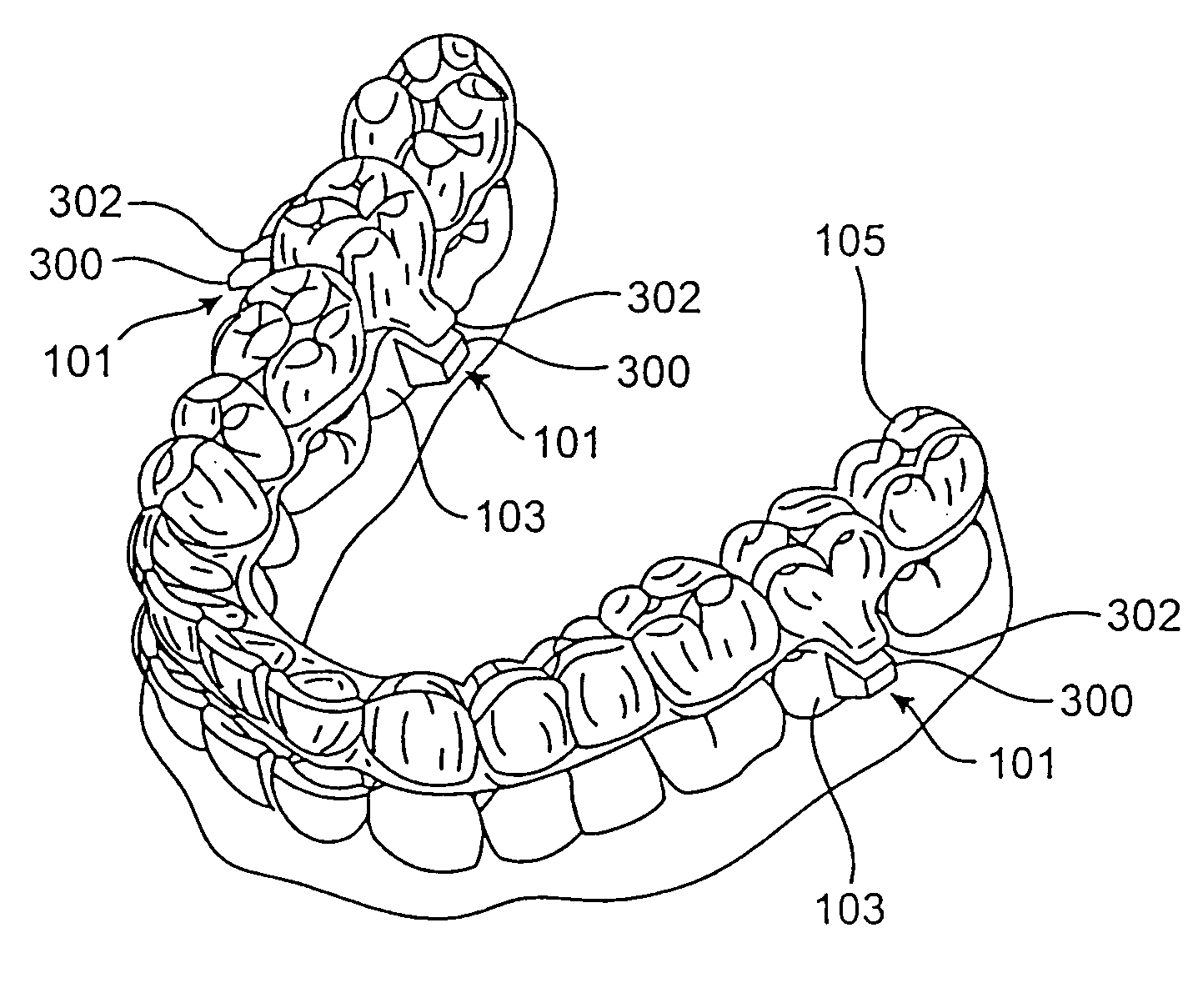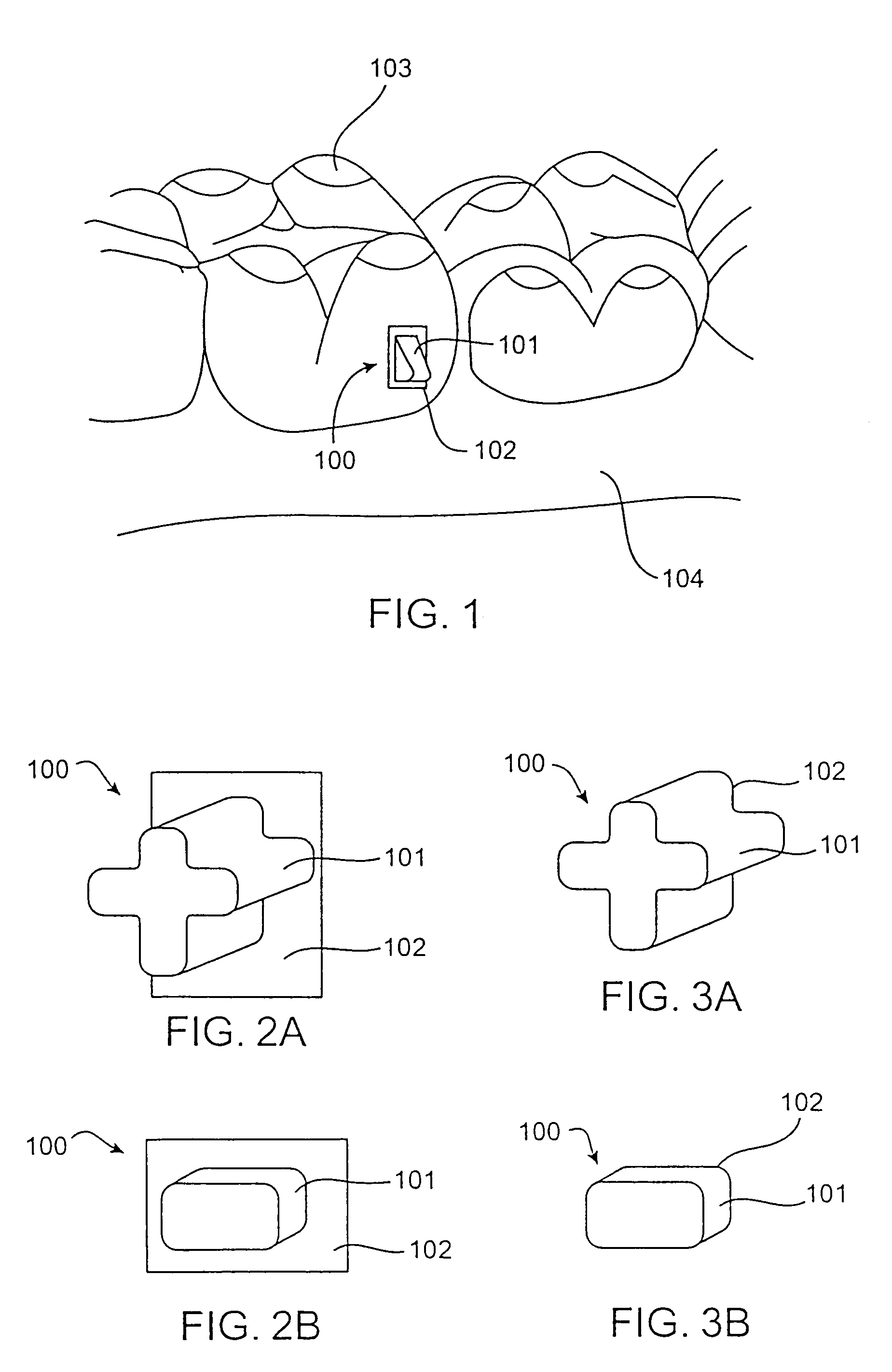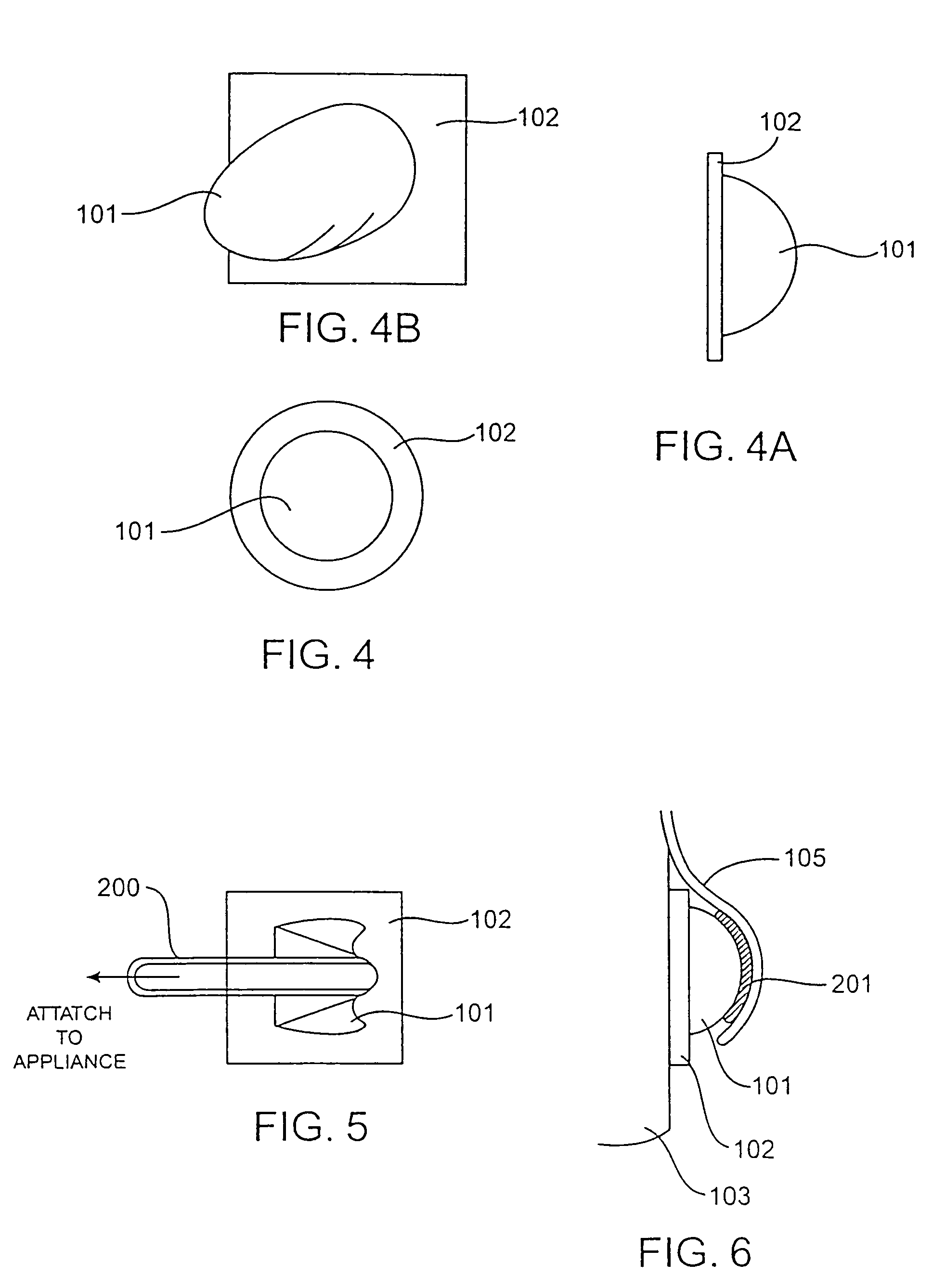Attachment devices and methods for a dental appliance
- Summary
- Abstract
- Description
- Claims
- Application Information
AI Technical Summary
Benefits of technology
Problems solved by technology
Method used
Image
Examples
first embodiment
[0058]Two additional methods are provided to produce and / or bond an attachment device 100 to a dental feature, such as a tooth 103. These embodiments are applicable for use with any dental appliance. The first embodiment involves a multi-tooth template. The multi-tooth template may be similar or identical to an elastic repositioning appliance, and it may be used for casting with polymerizing material and computer-aided casting with polymerizing material, as described above. However, it may differ in that the template may not be used as the repositioning appliance. Therefore, multi-tooth template designs may include features that are not applicable to such use. For example, in FIG. 16, one embodiment depicts a type of handle 403 with which to easily place and remove the multi-tooth template 404. As shown, the template 404 may contain receiving cavities 401 for only a select portion of teeth and it may include negative impressions 302 for attachment devices 100 on more than one tooth ...
second embodiment
[0059]The second embodiment involves a single-tooth template. The single-tooth template is similar to the multi-tooth template 404, however it may be more rigid as it is designed to fit over a single dental feature. As shown in FIG. 17A, one embodiment may contain a portion of a receiving cavity 401 which conforms to a portion of the surface of the target tooth 103. It may also contain a type of handle 403 to aid in placement of the single-tooth template 405. Production and bonding of an attachment device 100 to the tooth 103 may be accomplished by casting with polymerizing material or computer-aided casting with polymerizing material. Similarly, an additional embodiment of a single-tooth template 405 may be seen in FIG. 17B. Here the template 405 may be thin and flexible to conform to a portion of a dental feature. It may contain adhesive ring 406 around the negative impression 302 of the attachment device 100. The adhesive ring 406 will hold the template 405 in place on the dental...
PUM
 Login to View More
Login to View More Abstract
Description
Claims
Application Information
 Login to View More
Login to View More - R&D
- Intellectual Property
- Life Sciences
- Materials
- Tech Scout
- Unparalleled Data Quality
- Higher Quality Content
- 60% Fewer Hallucinations
Browse by: Latest US Patents, China's latest patents, Technical Efficacy Thesaurus, Application Domain, Technology Topic, Popular Technical Reports.
© 2025 PatSnap. All rights reserved.Legal|Privacy policy|Modern Slavery Act Transparency Statement|Sitemap|About US| Contact US: help@patsnap.com



